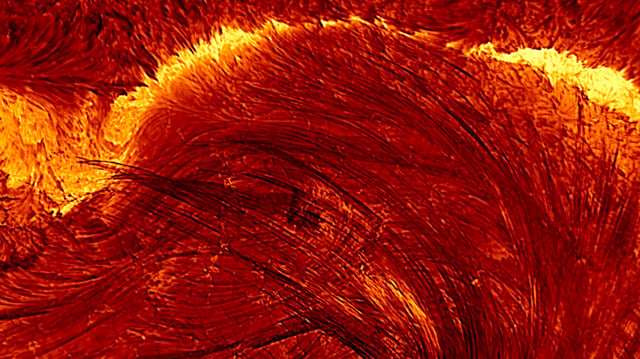Overview
- Researchers used DKIST to image the decay phase of an X1.3-class solar flare on August 8, 2024, at 20:12 UT.
- Measured loop strands averaged 48.2 km across, with some near 21 km, marking the smallest coronal loops ever imaged.
- The Visible Broadband Imager at 656.28 nm resolves solar features to about 24 km, exceeding previous ground-based resolution by more than 2.5 times.
- The authors propose the ultra-fine strands may be elemental flare structures, a possibility that will require follow-up observations and modeling.
- This was DKIST’s first observation of an X-class flare, captured in an image roughly four Earth-diameters wide showing dark threadlike loops above bright ribbons.

